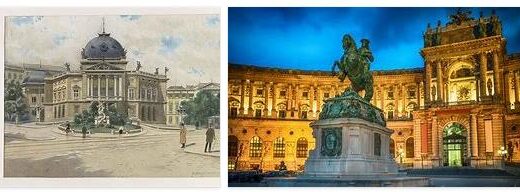Sweden Automotive Industry
The automotive industry is an essential part of the engineering industry.
By the middle of the 20th century, most types of transport equipment could be manufactured inland. The models were designed here, most components were manufactured here, sometimes under license from a foreign company, and the parts were mounted here. Since then, the transport industry has been one of the most expansive industries, but at the same time it has also undergone very major changes. Several sub-sectors have largely disappeared.
In Sweden, the automotive industry got underway in the 1910s and 1920s, when it was mainly focused on trucks (see the automotive industry). During the 1940s and 1950s Gothenburg and Trollhättan developed into the center of the Swedish car industry. In western and southern Sweden, a growing network of subcontractors with factories for the manufacture of bodies, chassis, engines, gearboxes and many other components also emerged. These became significant workplaces in a number of locations (for example, bodies were made in Olofström in western Blekinge and car seats in Bengtsfors in Dalsland).

Competition intensified, production became increasingly complex, development costs rose and the two Swedish manufacturers Volvo and Saab-Scania had problems maintaining production levels and profitability. The result was increased international ownership and reorganization. In 1999, Volvo, by far the largest car manufacturer, sold its passenger car part to the American Ford Motor Company but retained truck production. Saab-Scania’s unprofitable passenger car production (Saab-Automobil AB) became part of US General Motors in 1990. In 1995, Scania AB again became an independent company with truck and bus manufacturing, while Saab AB became focused on aircraft and defense systems.
Volvo Cars since 2011 is part of the Chinese Zhejiang Geely Holding Group with extensive production at the Torsland plant in Gothenburg. Saab Automobil AB with assembly plant in Trollhättan was purchased in 2011 by a Chinese car company but later sold on.
The manufacture of trucks and buses has also undergone dramatic changes. The Volvo Group and Scania AB have remained important producers in the global market, while their industrial employees in Sweden have become significantly fewer. Volvo Trucks AB is one of the world’s largest manufacturers of heavy trucks and has assembly plants in all parts of the world.
Bus manufacturing was for many years an unprofitable business in Sweden. Bodies are no longer manufactured in the country and final assembly now takes place abroad, including in Poland. Scania AB has a wide range of buses for public transport, while Volvo Buses AB focuses more on long-distance buses. In the world market for vehicles, there is another prominent Swedish player, namely Autoliv AB, which manufactures electrical and electronic equipment for car safety, mainly airbags. The company has production in about 30 countries.
The automotive industry also includes the manufacture of tracked wagons and combat vehicles within British-owned BAE Systems Hägglunds AB in Örnsköldsvik.
Rail vehicles are no longer manufactured in Sweden. However, the German company Bombardier, which designs and produces subway and commuter trains, has in Västerås manufacturing control systems for them.
The aviation industry has almost exclusively covered the production of military aircraft (see aerospace industry), until the 1970s only to the Swedish defense.
During the 1970s, the Saab 35 Dragon was developed, which also came to be exported to three other countries. An even bigger and more complicated project was the fighter aircraft JAS 39 Gripen, developed within Saab-Scania and ready for delivery in 1994. Until autumn 2015, Gripenplan has been sold to three countries and there are long-term loans in two more. The largest customer is the Swedish defense. The plan is compiled at Saab’s factory in Linköping, “Sweden’s flight capital”, and the components come from a large number of subcontractors, both in Sweden and abroad. From the mid-2010s, an upgraded version of Gripen is also being built, and for both models there are orders until 2020.
From the beginning of the 1980s until 1999, Saab also manufactured civil aircraft for regional traffic, especially Saab 340.
The shipbuilding industry grew during the interwar period, producing mainly for domestic demand. During the early post-war period, a number of Swedish shipyards became among the big ones on the global market where they specialized in specific sectors, mainly large oil tankers.
In the early 1970s, just before the oil crisis, the Swedish shipbuilding industry had its strongest position. Then, international oil trade and long-distance water transport declined, while a new shipbuilding industry grew strongly in Japan and South Korea in particular.
During the 1980s, there was a global overcapacity in the shipbuilding industry and in the high-cost country of Sweden it resulted in a pervasive shipyard crisis with the closure of almost all shipyards.
According to topb2bwebsites, Swedish and European shipbuilding industries have continued to shrink, and large civilian vessels are no longer manufactured in Sweden. Saab Kockums AB, together with the Swedish state, has a repair yard in Karlskrona where some submarines are also newly produced.
At smaller shipyards, mainly in the Gothenburg and Stockholm area, vessels for fishing and liner services are built along the coasts. Rescue and patrol boats for civil and military use are produced in Docksta on the central northern coast of Stockholm and at Muskö in Stockholm’s southern archipelago, and SaabKockum’s small combat boats are built on the underground shipyard at Muskö.
The largest repair yard, Götaverken City Shipyard in Gothenburg, ended in 2015, but along the coasts there are a number of smaller yards for repair, maintenance and rebuilding.
In Sweden, there was a growing demand for recreational boats for many years, but after the financial crisis in 2008-09 it decreased. Several manufacturers were forced into bankruptcy, while others limited the number of models, in some cases to expensive cruisers, and the production of small boats was reduced. The center for the manufacture of recreational craft is traditionally at Orust. (Compare shipbuilding industry).


